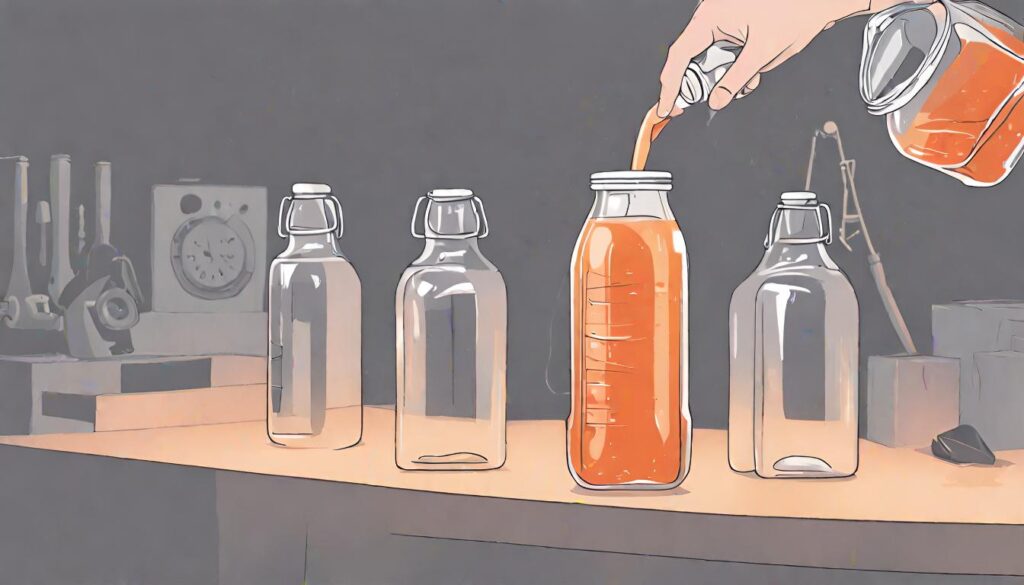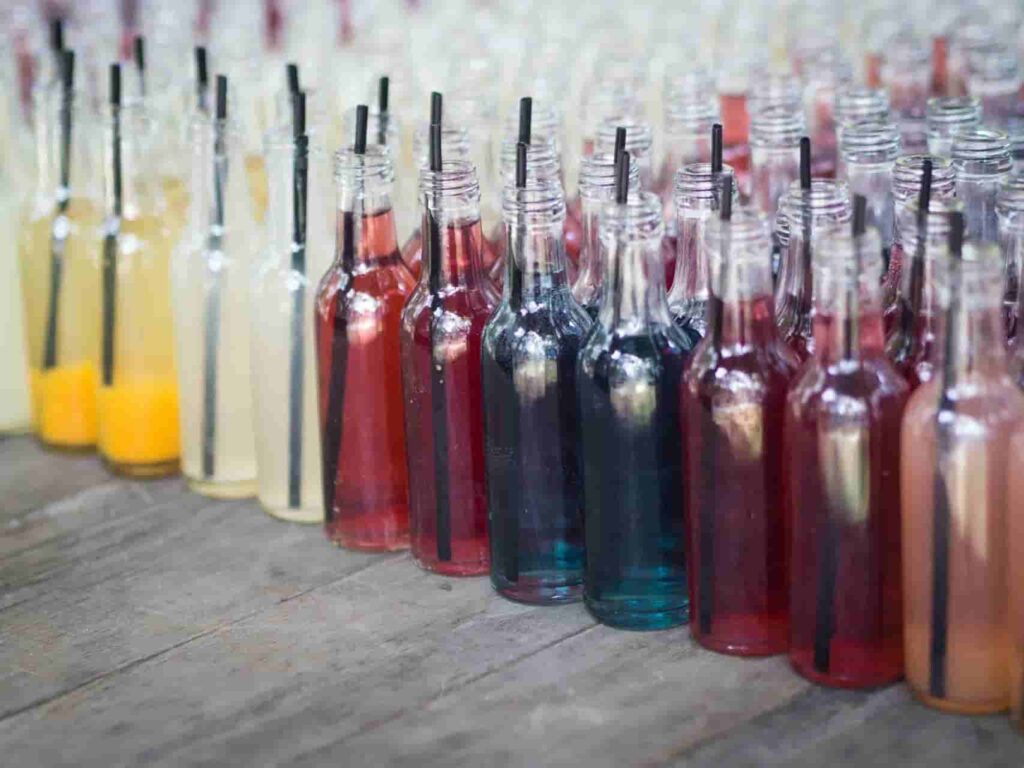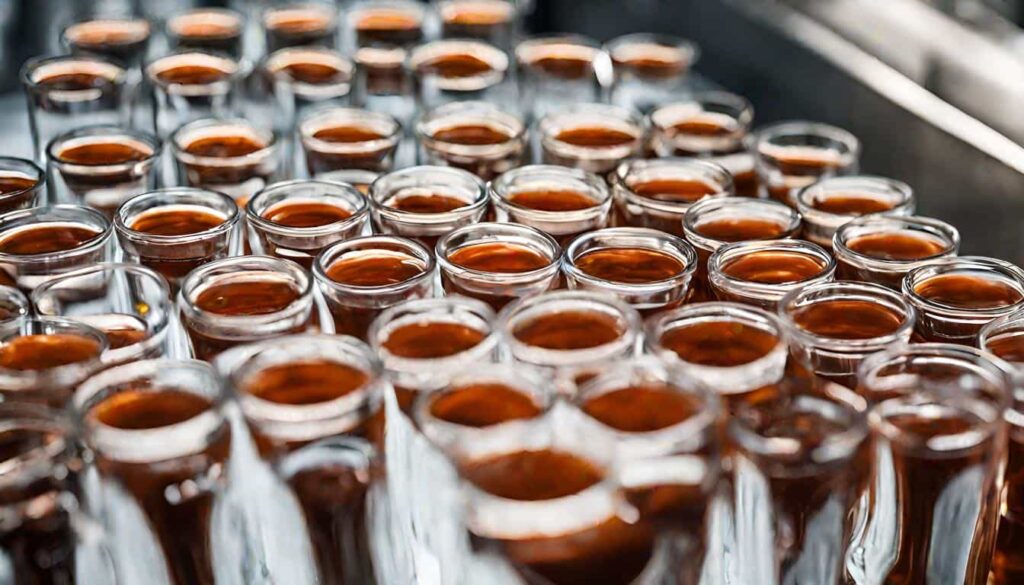In the food and beverage production industry, ensuring product quality and longevity is a paramount concern. One effective method of achieving this is the hot fill process, a technique widely used for packaging liquid products, including sauces and beverages. This blog delves into the intricacies of the hot fill process, particularly focusing on hot sauce in glass bottles, providing valuable insights for food and beverage brands, wholesalers, and retailers of glass bottles or jars.
Section 1 What is Hot Filling?
Hot filling is a sterilization and packaging technique widely used in the food and beverage industry. It involves heating a product, such as a sauce, juice, or tea, to a high temperature and then filling it into containers, typically glass bottles or jars, while it’s still hot. This process serves multiple purposes: it sterilizes the product by destroying harmful bacteria and other microorganisms, extends its shelf life without the need for preservatives, and ensures product safety. After filling, the containers are immediately sealed, locking in the freshness and quality of the contents. Hot filling is especially beneficial for acidic products, as the combination of heat and acidity provides an additional layer of protection against spoilage. This method is a popular choice for ensuring both the longevity and integrity of a variety of consumable goods.
Section 2 The Hot Filling Process Explained
The hot filling process is a key method in the packaging of liquids, particularly in the food and beverage industry. It’s a multi-step process that combines high-temperature treatment with packaging to ensure product safety, quality, and longevity. Here’s a detailed look at each step:
▶ Preparation of the Product:
The process begins with the preparation of the liquid product, such as juice, sauce, or beverage. This involves cooking or pasteurizing the product to the desired taste and nutritional specifications.
▶ Heating:
The product is then heated to a specific temperature, typically between 85°C and 92°C (185°F and 197.6°F). This high temperature is crucial as it serves to sterilize the product by killing harmful bacteria and other microorganisms.
▶ Sterilization of Containers:
Parallel to product heating, the containers (like glass bottles or jars) are also sterilized. This is to ensure that there are no contaminants that might spoil the product once it’s filled. The sterilization of containers can be done through various methods, including steam or chemical treatments.
▶ Filling:
In the filling stage, the hot product is transferred into the containers. This step needs to be executed promptly and precisely to maintain the temperature throughout the process. The hot liquid’s contact with the container’s inner surface further aids in sterilizing the container’s interior.

▶ Sealing:
Immediately after filling, the containers are sealed with airtight caps. This step is critical as it prevents any microbial ingress and maintains the sterility of the product. The sealing also needs to withstand the cooling process without leaking or deforming.
▶ Cooling:
Once sealed, the containers are gradually cooled to room temperature. The cooling must be controlled to prevent thermal shock and stress in the containers, which is particularly important for glass containers. This cooling phase solidifies the product’s state and prepares it for storage and distribution.
▶ Quality Control:
Throughout the process, quality control measures are employed. This includes checking temperatures, ensuring the containers are properly sealed, and verifying the product’s consistency and safety.
▶ Packaging and Distribution:
The final step involves packaging the cooled and sealed containers for distribution. The packaged products are then ready to be shipped to retailers and ultimately reach consumers.

The hot filling process is popular for its ability to extend shelf life without preservatives, maintain product quality, and ensure safety. It’s commonly used for acidic products like fruit and vegetable juices, isotonic drinks, and various types of sauces, including hot sauces. The method requires careful coordination and control of temperatures and timings to ensure the best results.
Section 3 The Benefits of Hot Filling Methods
Hot filling is a widely adopted method in the food and beverage industry, known for its efficiency and effectiveness in preserving the quality and safety of products. Here are the detailed benefits of the hot filling method:
▶ Extended Shelf Life & Enhanced Product Safety
One of the primary advantages of hot filling is the significant extension of a product’s shelf life. The high temperatures used in hot filling effectively sterilize both the product and the container, eliminating or deactivating a wide range of microorganisms that can cause spoilage. This allows the product to be stored for longer periods without the need for refrigeration or added preservatives.
Safety is a paramount concern in the food and beverage industry. Hot filling provides a high level of safety by killing harmful bacteria and pathogens present in the product. This reduces the risk of foodborne illnesses and ensures that the product is safe for consumption when it reaches the consumer.
▶ Preservation of Product Quality & Reduction of Preservatives
Hot filling helps maintain the original quality, taste, and nutritional value of the product. Because the product is filled hot and sealed immediately, it minimizes exposure to air and external contaminants, preserving its original state as much as possible.
Since hot filling effectively sterilizes the product, there’s often no need for additional chemical preservatives to prevent spoilage. This is particularly appealing to health-conscious consumers who prefer products with fewer additives.

▶ Energy Efficiency & Cost-Effective
Compared to other sterilization methods like retort or aseptic processing, hot filling can be more energy-efficient. This is because it typically requires less energy to simply heat the product and containers than to undergo the more complex processes of other methods.
Hot filling is often more cost-effective than other methods. The equipment required for hot filling is generally less expensive, and the process is simpler and faster, reducing labor costs and increasing production efficiency.
▶ Environmentally Friendly & Versatility
By reducing the need for preservatives and refrigeration, hot filling can be more environmentally friendly. It reduces the carbon footprint associated with the production, storage, and transportation of the products.
The method is versatile and can be used for a wide range of products, especially those with high acidity, such as fruit juices, sauces, and teas. This versatility makes it a preferred choice for many manufacturers in the food and beverage industry.

▶ Consumer Preference & Simpler Logistics
Products processed through hot filling often have a ‘freshness’ appeal to consumers. The perception of a minimally processed product without preservatives can be a significant selling point in a market where consumers are increasingly health-conscious.
Due to the extended shelf life and reduced need for refrigeration, products processed through hot filling often have simpler logistics and storage requirements. This can lead to lower costs and complexities in the supply chain.
In summary, hot filling offers a combination of benefits that make it a highly attractive method for the food and beverage industry. Its ability to extend shelf life, ensure product safety, maintain quality, and be cost-effective, all while appealing to consumer preferences, makes it a valuable process in modern manufacturing.
Section 4 What containers are the most suitable for hot filling?
Choosing the right containers for hot filling is crucial for the success of the process. Not all materials can withstand the high temperatures and rapid changes involved in hot filling. Here are the types of containers that are suitable:
Glass is a popular choice for hot filling due to its excellent thermal resistance and inert nature. It can withstand the high temperatures of the hot filling process without deforming or releasing harmful chemicals. Additionally, glass is impermeable and does not interact with the product, ensuring that the taste and quality of the contents remain unaltered. Contact Smilebottles to get the best bulk glass containers for your business.











